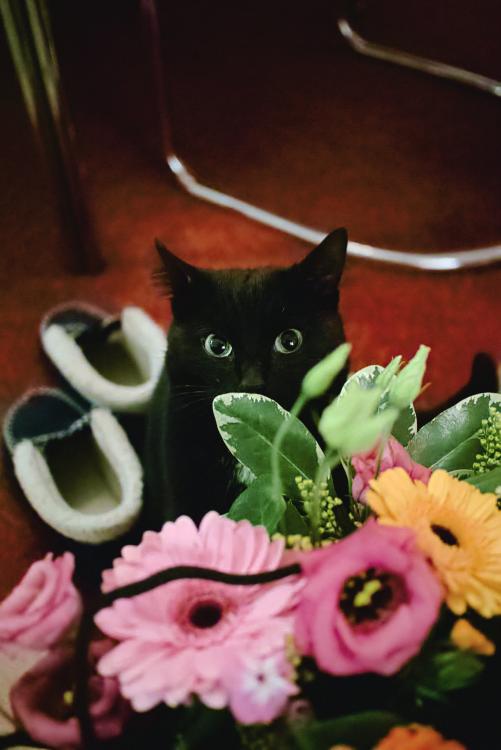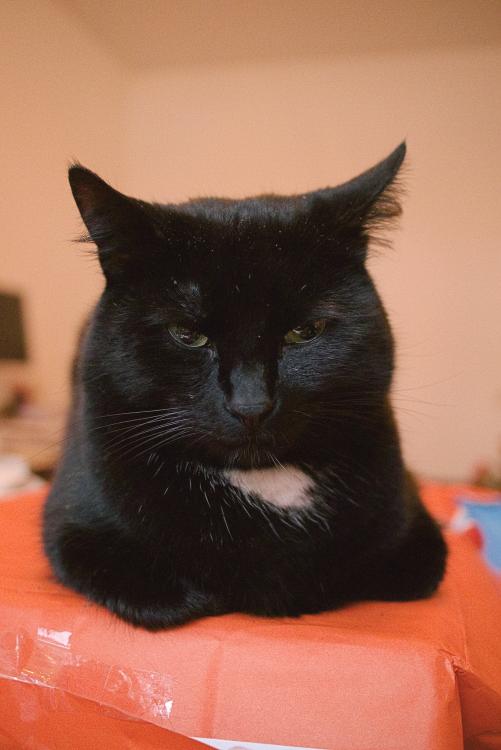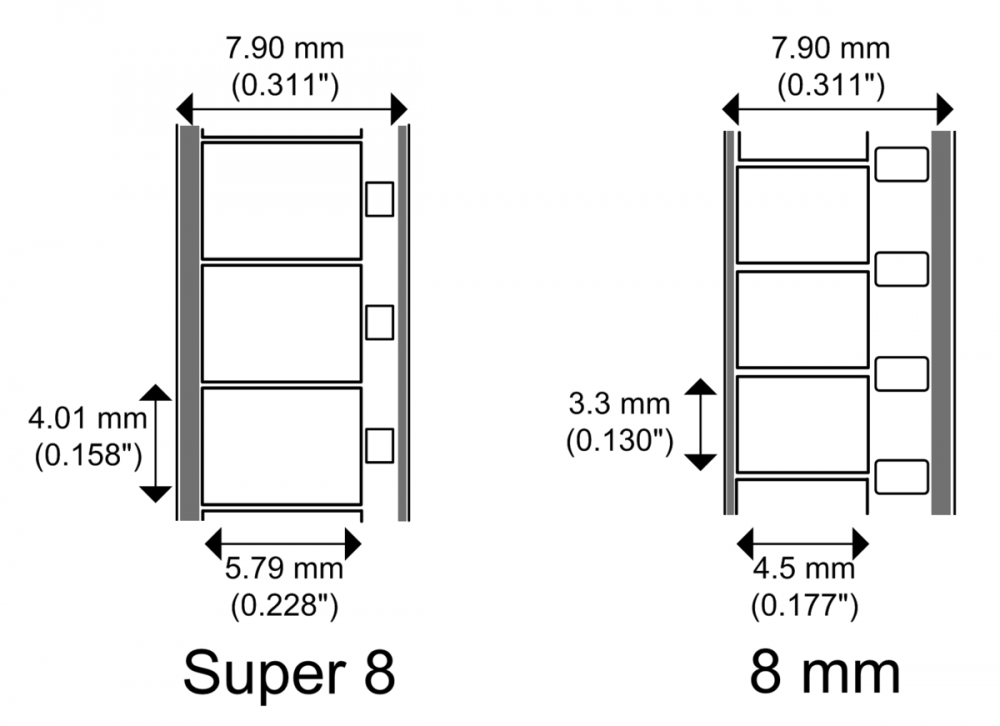
cantsin
Members-
Posts
948 -
Joined
-
Last visited
Content Type
Profiles
Forums
Articles
Everything posted by cantsin
-
My favorite go-to-always-on photography lens is the Canon EF-M 22mm/f2. It's so good - with distortion-free light wide-angle optics, good sharpness even wide open, fast and silent autofocus in an incredibly small pancake design - that I switched to EOS-M as my street photography/always-in-my-bag camera system. (With the EOS-M100, there is finally a really good compact body. That said, I use Sony A7 for full frame/low light photography & MFT/Blackmagic for video). Since Mattias is posting his dog... (Shot at ISO 25600 & 12800.)
-
@Alpicat, @Matt James Smith ?, can you unpack your process a bit? You're using the experimental built from https://builds.magiclantern.fm/experiments.html, right, and then use the mlv_lite module (instead of mlv_rec) with the parameters you mention?!? And does this support sound recording? (Last time, I tested, it didn't.)
-
It's actually 9.1% oversized. In 4:3 aspect ratio, it has the standard Four Thirds sensor size of 17.3x13.0 mm and 3680 pixels horizontal resolution. In 16:9, the horizontal resolution is 4016, which is 109.1% of 3680. (Source: https://www.panasonic.com/uk/consumer/cameras-camcorders/lumix-g-compact-system-cameras/dc-gh5s.specs.html) 9.1% can be a lot in a crammed body.
-
The advantage of shooting 18fps is that it gets closer to the typical look of Super 8 home movies - which were mostly shot in 18fps in order to squeeze more recording time out of a single cartridge. Even many S8 projectors, such as the popular Eumig 610D, couldn't project more than 18fps. On top of that, 18 fps reduces the data rate by 25% - so it could help with continuous recording at higher resolutions. Or you get 25% more recording time out of your storage medium, just like in the analog days.
-
So I suppose you shot 18fps via MagicLantern's FPS Override setting? It has the disadvantage of sound getting out of sync, since the video stream still bears the time code for the nominal frame rate set in Canon's video menu. But video and audio can be easily synced back in post. Resolve allows native 18fps timelines; 16fps, too, which was the standard frame rate for Normal/Double 8 film. (I suppose these option exists for the reason that many 8mm film scanning service providers use Resolve for color correcting their film scans.) I haven't looked into the 5x crop-rec feature yet but use the standard nightly build of ML for EOS-M with the run-of-the-mill "movie crop mode" available in the ML video options menu. So I suppose you're using the experimental ML built for EOS-M and the mlv_lite instead of the mlv_rec module for raw video recording? I've tested that briefly but dropped it because it didn't support sound recording. (Has this changed in the meantime?) I deal with the focus pixels by using the 2x2 chroma smoothing option in mlv_dump ; my command line parameters are: mlvdump --relaxed --dng --cs2x2 <xy.mlv> My image was 960x720 (i.e. 4:3 720p) with full 14bit raw recording at 24fps. This allows continuous recording as the bitrate/data throughput is not yet in the critical range of the camera. If I understand things correctly, then 12bit recording means that upper values of the bitstream are cut off and you lose dynamic range. For a filmic image, I'd rather preserve as much dynamic range as possible.
-
Panasonic's GH product manager said so in an interview when asked about the future developments of the camera line. But this is not about broadcasters, but consumers who buy cameras that are spec-wise on par with broadcast standards - and their home 8K tv sets that will have been rolled out by then.
-
Yes, the EOS-M with ML Raw is the digital Super 8 camera - aside from the fiddly handling and ergonomics, where original Super 8 cameras were much better. The effective sensor size in 4:3 3x sensor crop is 6.62x4.96mm, which is slightly larger than Super 8's frame size of 5.79x4.01mm. When shooting 720p, the effective sensor size drops to 4.41x3.31, which almost exactly matches the older Double/Normal 8mm standard. I've used the EOS-M with real Super 8 lenses (an adapted Schneider Variogon 6-66mm/f1.8 with Leica M mount originally made for the Leicina Special camera and an Angenieux 8-64mm/f1.9 with c-mount originally made for Beaulieu cameras), with the following results: My workflow was different: - In both videos, Color Charts (X-Rite Passport Video) were shot for reference colors; - the .MLV files were converted to .DNG and imported, edited, graded and rendered in Resolve; - in the first video, no color correction/grading was done except lift/gamma/gain corrections + Neat Video on the low-light indoor shots at the end; - in the second video, a LUT based on DxO Film Pack's Kodachrome 25 emulation was used, on the final color correction node, for tweaking/styling the colors + FilmConvert's grain emulation was applied (without FilmConvert's color filters). Sound in both videos is out-of-the-camera, recorded with the internal mic. It's a nice, low-budget solution (all the more since you can nowadays pick up a used EOS-M body for about $100 - so I do even have two bodies). Quality Super 8 lenses are sharper on the small image circle than Canon's APS-C lenses (when so heavily cropped to 1:1 pixel sampling), but difficult to find on the second-hand market since only very few Super 8 cameras with interchangeable lenses existed. A note of caution: the Fujinon c-mount zoom of the Fuji ZC1000 Single 8 camera is a great lens but can't be adapted because its base is too thick to fully screw into the adapter. A d-mount adapter for adapting old Normal 8mm lenses (which are plenty available for cheap) unfortunately does not exist for EOS-M. Further drawbacks is the occasional funkiness of Magic Lantern, its incapability to memorize the movie crop setting upon startup, difficulty to precisely focus on the small display (since there's hardly any punch-in focus at 1:1 sensor sampling) and heavy file sizes due to uncompressed Raw recording. In addition, the Raw is not remotely as tweakable/pushable in post as the CinemaDNG recorded by the BM Pocket. But, of course, the Super 8 aesthetic is highly charming (and couldn't be emulated with the BM Pocket as well since you'd drop its resolution to SD in order to reach an S8 image circle on the sensor/use S8 lenses without vignetting). How were you able to set 18fps in MagicLantern? I haven't been aware of this possibility (and always shot 24fps). I'm not familiar with FCPX, but for optimal results, you should set the timeline to 18fps as well or at least a whole-number multiplier of it (such as 72fps) to avoid choppy motion.
-
There's one safe prediction: Panasonic had to design the GH5s without IBIS because the GH5 body didn't provide enough physical space for the larger multi-aspect sensor & IBIS suspension mounting. So I expect that the GH6 will have a newly designed, slightly larger body that will allow IBIS in both camera/sensor variants. I'd also expect a number of upgrades in the camera electronics, including faster sensor readouts with higher frame rates at 10bit, substantially improved autofocus, generally improved signal processing (including color science and noise filtering). HDR and VLog will likely be out-of-the-box features. In the light of the Tokyo 2020 Summer Olympics, the mainline GH6 is quite likely to be pimped to recording 8k video. Since 48 Megapixels (8000x6000) make no sense on a Four Thirds sensor, but will lead to noisy pixels, bad low light and inferior dynamic range, we will likely be grateful for Panasonic's decision to split up the GH line into two models - and stick with the GH*s for serious filmmaking in the future.
-
Digital cinema is not 4K, but 2K in more than 90% of all cases. (Even where theaters do have 4K projection, the films have been mastered in 2K with very rare exceptions.) From the standpoint of cinematic picture quality (=achieving cinema image quality on home viewing equipment), HDR is much more relevant than 4K. Define "consumer". If you mean consumer price range - the Blackmagic Pocket shoots 12bit color depth in raw and has been on the market for four years. Canon cameras with ML raw even shoot 14bit color depth.
-
It shouldn't be over the top - digital cinema/DCP has always been HDR. HDR just means that the gap in color reproduction quality between cinema and consumer video is closing.
-
This is what well-shot and well-scanned Super 8 film looks like: You need 3 ingredients: - A top-of-the line Super 8 camera with precision film transport and a sharp lens, like a Beaulieu, Canon 1040/840xl or Nikon R10. Today, these can be bought cheap. Paid 25 Euro for my 840xl. - Kodak Vision 50D stock for the kind of fine-grain, high-resolution footage you see above. Easily reaches the quality that 16mm had in 1970s and 80s. - A competent scanning service - the operator counts as least as much as the machine. The above examples are from Ochoypico in Spain who are known for their high quality. Failing those ingredients (by filming with a cheapo consumer Super 8 camera on grainy and ugly-color stock like Agfa 200D which is currently the only color reversal stock on the market, and having some low-quality scan on a Reflecta or similar), you get results that look like webcam footage.
-
When someone (=Neistat) says that, after a lot of soul searching, he realized that filmmaking is a sport, not an art for him, kudos to him . But I personally don't want to have anything to do with that attitude - and hope that it will never take over forums like this one here.
-
Here's a comparison of the scan results from a Reflecta and from the Mueller HM73 (a comparatively affordable professional S8 scanner which still costs more than $10,000), conducted by Frank Rudolph who's an expert for S8 scanning:
-
Which scanners are available for $500 used? Am curious! - Common wisdom is that nothing below the Moviestuff (which retails for several thousands) is really usable, especially not the cheap Reflecta S8 scanners. Kodak hasn't brought back reversal film yet, btw...
-
Does anyone have experience with the new 7Artisans 35mm f1.2 APS-C manual prime lens (for Sony E-mount, Fuji X-mount and Canon EOS-M)? It looks incredibly small - smaller than many pancakes -, weighs only 150g and costs less than $150. I'm not expecting optical miracles, with such a large aperture combined with such a compact and simple optical construction. But still the question is: Will it only perform like a toy lens, or will be it a decent lens when stopped down and good enough for portraits wide open?
-
Nikon will almost surely release a full frame mirrorless system. (The mount diameter is a strong indicator - and it wouldn't make sense for the company to launch another consumer mirrorless system after the failure of Nikon 1.) I bet that the first new camera will be largely identical to the D850, only with the new mirrorless mount and an EVF instead of the mirror box. The new mount will be 100% electronically compatible to the current F mount, and a lens adapter will be offered.
-
Well, DPReview and Imaging Resource compare stills, Slashcam actually tested video quality.
-
On January 1st, when the GH5s was still unannounced and subject to speculations on this forum, I wrote: "Panasonic will release the GH5s as a camera that will have a native 4K sensor, resulting in about 1 stop more light sensitivity and 1 stop more dynamic range, and perfect Vlog compatibility (since the Vlog curve was designed for cameras with higher dynamic ranges than the GH4 and GH5). However, lack of oversampling will result in a less detailed image with more moiré problems. In addition, the camera will cost a hefty premium over the GH5, catering to buyers who want a compact b-cam to a Varicam or EVA." Got a bit of beating for this, but it turns out that my speculation was rather right. Here's a test chart comparison based on GH5s (left) and GH5 (right) by the - excellent - German video site slashcam:
-
DR numbers don't say much. A camera might display 14 stops from a test chart, but if the lowest three stops consist of >50% noise, the camera will only have 11 usable stops of dynamic range. For 14 stops DR with a clean signal in every stop, you'll need a high-end camera like the Alexa. With lower-end cameras/sensors, it helps a lot if they record in high-quality codecs (ProRes or DNxHR, RAW in the best case), with little or no processing applied to the sensor image, so that high-quality software noise filters like Neat Video can do their best job cleaning up noisy shadows using temporal noise filtering.
-
Played with DPreview's studio scene comparison tool, too - and to me, the image quality of the GH5 and GH5s isn't very different, only that the GH5s has one stop more sensitivity, with ISO 6400 on the GH5s looking like ISO 3200 on the GH5. Dynamic range is about the same in both cameras.
-
Troll.
-
Yes. But the real gap between a Panasonic GH camera (or a Sony A7 camera) and a Blackmagic (or RED) camera is that in-camera noise filtering and artificial sharpening cannot be switched off. (On top of that, in-camera geometry and vignetting corrections for system lenses can't be switched off.) Sothe image from a GH camera will always look more processed and therefore more video-ish. Aside from that, BM cameras produce much deeper colors (i.e. higher color resolution) than GH (and A7) cameras in video mode - which is quite visible in gradation/variation of skin tones, among others. It would be a great achievement if the GH5s made a difference here over previous GH cameras. But losing IBIS also means losing one of the killer advantages of the GH5 over Blackmagic - its versatility as an all-in-one, handheld run-and-gun camera.
-
RAW doesn't have color science.
-
Software to trim MP4 4k files without recoding
cantsin replied to Marcio Kabke Pinheiro's topic in Cameras
Avidemux, which has been mentioned above, is indeed the right tool for this job. When trimming h264/mpeg video, it allows you to jump from keyframe to keyframe and set them as in/out markers. This way, it can trim video files in a clean way without any reencoding, quality loss or garbled frames. On top of that, it's Open Source, running on Windows, Mac and Linux, and has been stable and mature for years. -
Okay, here's a more pessimistic expectation: - Panasonic will release the GH5s as a camera that will have a native 4K sensor, resulting in about 1 stop more light sensitivity and 1 stop more dynamic range, and perfect Vlog compatibility (since the Vlog curve was designed for cameras with higher dynamic ranges than the GH4 and GH5). However, lack of oversampling will result in a less detailed image with more moiré problems. In addition, the camera will cost a hefty premium over the GH5, catering to buyers who want a compact b-cam to a Varicam or EVA. - Sony will release the A7S Mark III. It will have the same sensor as the A9 at a lower price, but like the A7 RIII, it will still be an 8bit camera with 8bit pseudo-HDR. - Canon will release the 7D Mark III with the same underwhelming video specs (mushy 1080p in 8bit) as every Canon APS-C DSLR since 2009 and as the current EOS-M cameras. - Fuji will release the video version of the XT2, but its video features (4K 8bit) will just be on par of what Sony has been offering since a couple of years with the A6300, A6500 and A7s/R II. - Blackmagic will further streamline its camera portfolio and phase out at least one of its three compact bodies (Pocket, Micro Cinema Camera or Micro Studio Camera). Development will continue to focus on the URSA camera line. (This is already visible in the fact that there have been no more firmware updates for the compact bodies for quite some time.)




